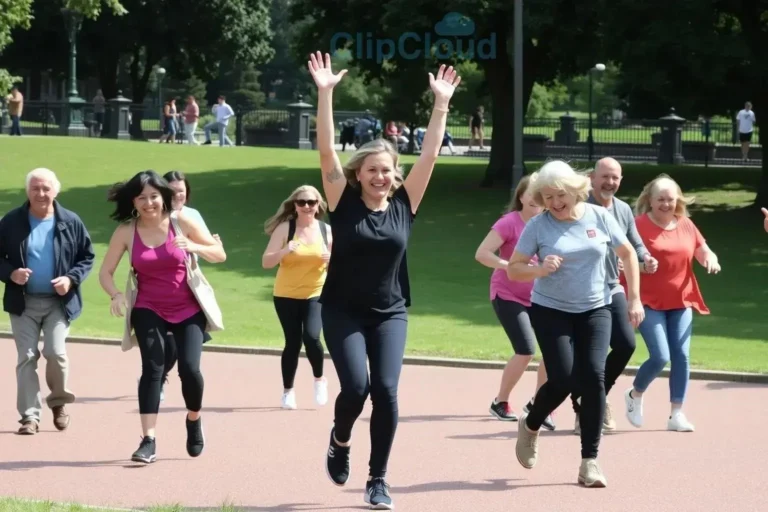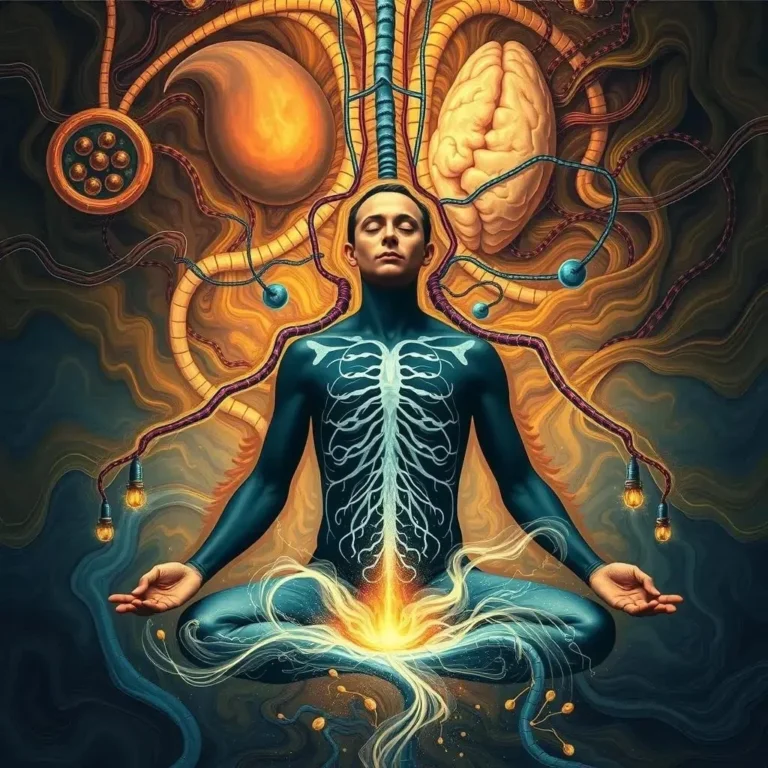Understanding Sensory Overload in the Digital Age
We live in a world saturated with digital information. From the moment we wake to the second we sleep, we’re bombarded with notifications, updates, and an endless stream of content. This constant influx of stimuli can lead to sensory overload, a state where our brains struggle to process and filter the information effectively. The symptoms can range from feeling overwhelmed and anxious to experiencing difficulty focusing and making decisions.
This digital deluge impacts our attention spans, making it harder to concentrate on tasks requiring sustained focus. Our brains become accustomed to the rapid-fire nature of online content, craving constant novelty and stimulation. This can make it challenging to engage with activities that require deeper thought and processing.
Identifying Your Digital Triggers
Recognizing your personal digital triggers is a crucial first step in managing digital overload and reclaiming your attention span. These triggers are specific online activities or situations that exacerbate feelings of overwhelm, anxiety, or distraction. By pinpointing these triggers, you can begin to develop strategies to mitigate their impact and cultivate healthier digital habits.
Social Media Scroll Holes: Do you find yourself endlessly scrolling through social media feeds, losing track of time and feeling drained afterward? The constant stream of updates, comparisons, and fear of missing out (FOMO) can be a major trigger for sensory overload. Pay attention to which platforms and types of content leave you feeling the most depleted.
Notification Overload: The constant buzzing, pinging, and flashing of notifications can fragment your attention and disrupt your focus. Consider which notifications are truly essential and which ones can be disabled or minimized. Experiment with turning off notifications for certain apps or setting specific times for checking them.
News and Current Events: Staying informed is important, but the 24/7 news cycle can be overwhelming. The constant barrage of negative news and alarming headlines can contribute to anxiety and stress. Be mindful of how much news you consume and from which sources. Consider limiting your exposure to news during specific times of the day.
Email Inundation: A cluttered inbox can feel like a constant weight on your mind. The pressure to respond to emails immediately can create a sense of urgency and distraction. Try implementing strategies like setting designated times for checking email, unsubscribing from unnecessary mailing lists, and using filters to organize your inbox.
Online Shopping and Advertising: Targeted advertising and the allure of online shopping can trigger impulsive buying behavior and contribute to feelings of dissatisfaction. Be aware of how these tactics influence your emotions and spending habits. Consider using ad blockers and being more intentional about your online purchases.
Multitasking and Media Consumption: Attempting to juggle multiple digital tasks simultaneously, such as browsing social media while watching a video and responding to emails, can overwhelm your cognitive resources. This constant switching of attention can lead to reduced productivity and increased stress. Practice focusing on one task at a time and minimizing distractions.
Late-Night Screen Time: The blue light emitted from electronic devices can interfere with your sleep cycle, making it harder to fall asleep and stay asleep. This can further exacerbate feelings of fatigue and difficulty concentrating. Establish a digital curfew and avoid screen time for at least an hour before bed.
Gaming and Entertainment: While gaming and online entertainment can be enjoyable forms of relaxation, excessive engagement can contribute to digital overload. Be mindful of how much time you spend on these activities and ensure they are not displacing other important aspects of your life, such as sleep, exercise, and social interaction.
By identifying your specific digital triggers, you can begin to develop personalized strategies for managing your digital consumption and reclaiming your attention. This awareness is the foundation for cultivating healthier digital habits and fostering a greater sense of presence and well-being in the digital age.
Practical Strategies for Managing Digital Consumption
Once you’ve identified your digital triggers, you can implement practical strategies to manage your digital consumption and reclaim your attention span. These strategies involve conscious choices and behavioral changes to create a healthier relationship with technology.
Schedule Digital Detox Periods: Designate specific times throughout the day or week to disconnect from digital devices entirely. This could involve turning off notifications, putting your phone on airplane mode, or leaving it in another room. Use this time to engage in activities that don’t involve screens, such as reading, spending time in nature, or pursuing hobbies.
Establish Tech-Free Zones: Create designated spaces in your home, such as your bedroom or dining room, where digital devices are not allowed. This helps establish boundaries and promotes more mindful engagement with your physical surroundings and the people you share your space with.
Curate Your Digital Environment: Be intentional about the content you consume and the accounts you follow. Unfollow accounts that trigger negative emotions or contribute to feelings of inadequacy. Unsubscribe from email lists that clutter your inbox. Fill your digital feeds with content that inspires, educates, and uplifts you.
Practice the “One Tab Rule”: Limit yourself to having only one tab open in your web browser at a time. This helps minimize distractions and encourages deeper focus on the task at hand. Resist the urge to constantly switch between tabs and give your full attention to the current task.
Utilize Website Blockers: Employ website blockers or apps that limit your access to distracting websites or apps during specific times. This can be particularly helpful for managing time spent on social media or other non-essential online activities, especially during work or study periods.
Set Time Limits for Apps: Many smartphones now offer built-in features that allow you to set daily time limits for specific apps. Use these features to monitor and control your app usage, ensuring that you’re not spending excessive time on platforms that contribute to digital overload.
Turn Off Non-Essential Notifications: Disable notifications for all but the most essential apps. The constant barrage of notifications can fragment your attention and disrupt your focus. By minimizing notifications, you regain control over your attention and reduce the urge to constantly check your phone.
Practice Mindful Media Consumption: When you do engage with digital content, do so mindfully. Pay attention to how the content makes you feel. Are you feeling informed, inspired, or entertained? Or are you feeling overwhelmed, anxious, or drained? Be selective about the content you consume and prioritize quality over quantity.
Prioritize Real-World Connections: Make a conscious effort to cultivate real-world connections with friends, family, and colleagues. Face-to-face interactions provide a sense of connection and belonging that digital interactions often lack. Prioritize in-person conversations and shared experiences over online communication.
By consistently implementing these practical strategies, you can gradually regain control over your digital consumption, reduce feelings of overwhelm, and reclaim your attention span. These changes empower you to create a more balanced and fulfilling relationship with technology, allowing you to harness its benefits without succumbing to its potential drawbacks.
Cultivating Mindfulness and Presence
Beyond managing digital consumption, cultivating mindfulness and presence is essential for reclaiming your attention span and fostering a sense of calm amidst the digital deluge. Mindfulness involves paying attention to the present moment without judgment, while presence refers to being fully engaged in the here and now.
Practice Mindful Breathing: Regularly engage in mindful breathing exercises. Focus on the sensation of your breath entering and leaving your body. This simple practice can anchor you to the present moment and calm your mind when you feel overwhelmed or distracted.
Engage Your Senses: Consciously engage your senses throughout the day. Notice the sights, sounds, smells, tastes, and textures around you. This helps shift your focus away from digital distractions and cultivates a deeper appreciation for the present moment.
Body Scan Meditation: Practice body scan meditation, a technique that involves bringing awareness to different parts of your body, noticing any sensations without judgment. This practice can help you connect with your physical self and reduce feelings of stress and anxiety.
Mindful Walking: Take mindful walks in nature. Pay attention to the sensation of your feet on the ground, the rhythm of your breath, and the sights and sounds of your surroundings. This combines physical activity with mindfulness, promoting both physical and mental well-being.
Single-Tasking: Embrace single-tasking and resist the urge to multitask. Focus your full attention on one task at a time. This enhances your concentration and allows you to complete tasks more efficiently and effectively.
Cultivate Gratitude: Regularly reflect on the things you are grateful for. This can shift your focus away from what’s lacking and cultivate a greater sense of appreciation for the present moment. Keep a gratitude journal or simply take a few moments each day to acknowledge the good in your life.
Digital Minimalism: Embrace the principles of digital minimalism, a philosophy that encourages intentional use of technology. Focus on using technology to support your values and goals, rather than allowing it to dictate your time and attention.
Mindful Technology Use: When you do use technology, do so mindfully. Set clear intentions for your digital interactions and avoid aimless scrolling or browsing. Be present and engaged with the content you consume.
Create a “Mindfulness Corner”: Designate a space in your home as a “mindfulness corner.” This could be a quiet area where you can practice meditation, yoga, or simply relax and unwind without digital distractions. This creates a sanctuary for cultivating presence and inner peace.
Seek Professional Guidance: If you’re struggling to manage digital overload and cultivate mindfulness, consider seeking professional guidance from a therapist or counselor. They can provide personalized strategies and support to help you navigate the challenges of the digital age and reclaim your attention.
By incorporating these mindfulness and presence practices into your daily routine, you can cultivate a greater sense of awareness, reduce stress, and reclaim your attention span. These practices empower you to navigate the digital world with intention and presence, fostering a more balanced and fulfilling life.





